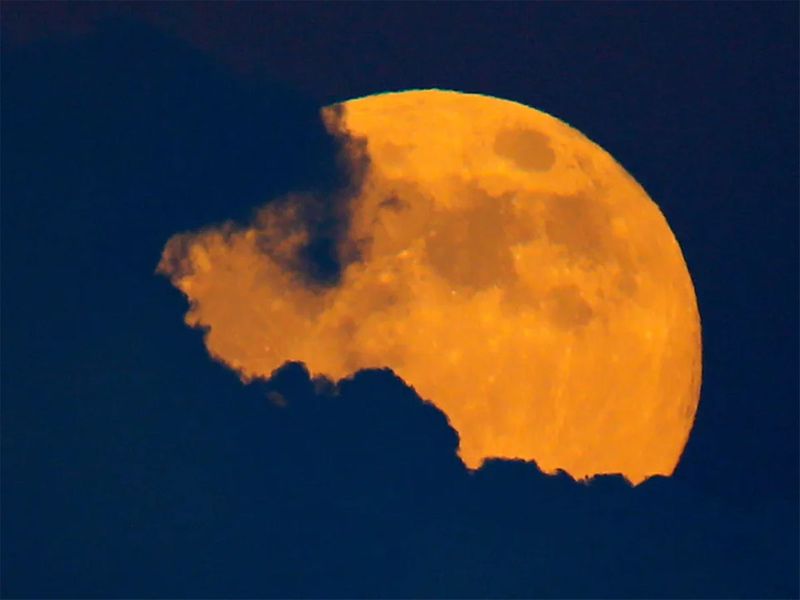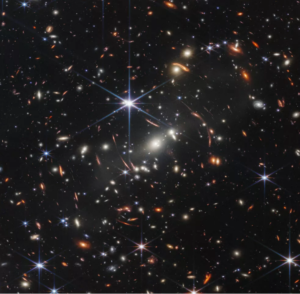
The first full moon of 2024 will illuminate the UAE skies tomorrow, January 25. Stargazers and skywatchers are calling it the ‘Wolf Moon’. But, why does tomorrow’s full moon have a special nickname?
To find out, we spoke to Khadija Ahmed, an astronomy expert working as the Operations Manager at the Dubai Astronomy Group (DAG), since 2016. DAG is a Dubai-based non-governmental organisation that promotes the study of astronomy and its related fields in the Middle East region.
Why is it called the ‘Wolf Moon’?
“‘Wolf Moon’ is the name given to the first full moon of the year, which appears in January,” Ahmed explained. “It is believed to have been named so, because wolves were heard more often at this time, traditionally associated with winter in the northern hemisphere.”However, a ‘Wolf Moon’ is no different from any other full moon, “which occurs when the Moon’s side facing Earth is fully illuminated by the Sun, making it appear as a bright, circular disk in the sky.
“It happens approximately every 29.5 days, the duration of one lunar cycle, or once per calendar month,” she added.
Different full moons throughout the year have different names. These names are observed to correspond with the weather and agricultural patterns at any given time of year. This is because, since ancient times, full moons have been integral to tracking the change of months and seasons.
“The names of full moons, like the ‘Wolf Moon’ and ‘Snow Moon’, were primarily given by Native American tribes and later adopted by colonial Europeans,” Ahmed explained.
Names of some other moons
- Snow Moon (February): Named for the typically snowy conditions of February.
- Pink Moon (April): Named after pink flowers that bloom in early spring.
- Harvest Moon (September or October): Named for the time of harvesting crops.
Source: Khadija Ahmed, Operations Manager at Dubai Astronomy Group.
Traditional names of full moons are listed in the Farmer’s Almanac, also known as the ‘Old Farmer’s Almanac’. It is an American annual journal containing anecdotal weather predictions, planting schedules, astronomical tables, astrological lore, recipes, and anecdotes. It was first published by Robert B. Thomas in 1792 for the year 1793 and is now available for online reference.
Fact box: The earliest almanacs were calendars that included agricultural, astronomical, or meteorological data. They helped people manage daily activities such as farming, cooking, clothing, and religious events. Early versions of almanacs were likely produced by astronomers and astrologers, who would calculate and record the daily movements of the sun, moon, planets, and stars, according to an educational website, study.com.
What time will the ‘Wolf Moon’ be visible?
Ahmed said that the ‘Wolf Moon’ will be visible on January 25, from sunset onwards. “It will rise from 5.30pm and set around 7am [on January 26] and you can see it with the naked eye,” she said.
The Smithsonian’s National Zoo and Conservation Biology Institute in the US answered one of the most-searched questions about grey wolves, the largest members of the canine family.
“Howling may be heard at night, but it is not a behaviour directed at the moon. Instead, it is used as a social rally call, a hail to hunt, or as a territorial expression.
“Did you know that individual wolves have different howls that can be heard by other wolves six to seven miles (nine to 11kms) away? A howl can even help a lost wolf find its way home. A wolf separated from its pack uses a ‘lonesome howl’ — a shortened call that rises in pitch. If answered, the wolf then responds with deep, even howls to inform the pack of its location.”
Is the ‘Wolf Moon’ a supermoon?
The short answer to this commonly googled question is: No. The Moon will not look larger tomorrow than a usual full moon does and is not the same as a supermoon.

“A supermoon occurs when a full moon coincides with the Moon being at its closest approach to Earth in its orbit, making it appear larger and brighter in the sky,” Ahmed said. According to her, the specific dates of supermoons vary each year.
Supermoon appearances in 2024
“For 2024, the supermoons are on July 21 (Buck Moon), August 19 (Sturgeon Moon), September 18 (Harvest Moon), October 17 (Hunter’s Moon), and November 15 (Beaver Moon),” Ahmed added.
Checkout: Sheikh Mohammed Launches Dubai Social Agenda D33, With A Budget Of Dh208b
Austin Peter
I am a 23 year old Electronics Engineer. I am also a travel enthusiast and also a webmaster. Please, help my site grow for a better service. Do contact me for financial donations and supports of any kind.
NB: I own this website for I created it from scratch. Although I am currently in partnership with Oset Ventures Group.












